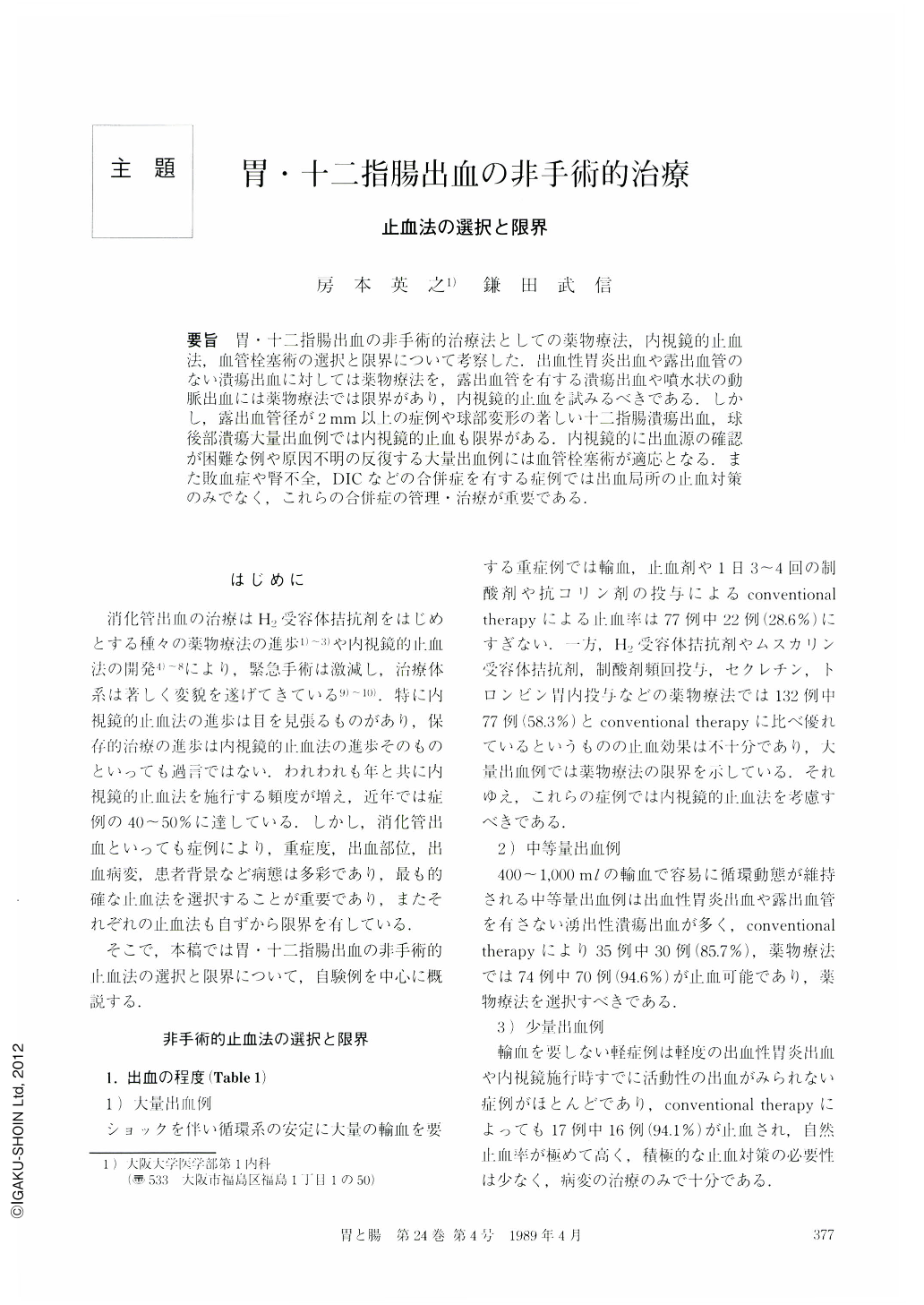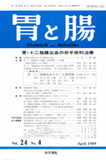Japanese
English
- 有料閲覧
- Abstract 文献概要
- 1ページ目 Look Inside
要旨 胃・十二指腸出血の非手術的治療法としての薬物療法,内視鏡的止血法,血管栓塞術の選択と限界について考察した,出血性胃炎出血や露出血管のない潰瘍出血に対しては薬物療法を,露出血管を有する潰瘍出血や噴水状の動脈出血には薬物療法では限界があり,内視鏡的止血を試みるべきである.しかし,露出血管径が2mm以上の症例や球部変形の著しい十二指腸潰瘍出血,球後部潰瘍大量出血例では内視鏡的止血も限界がある.内視鏡的に出血源の確認が困難な例や原因不明の反復する大量出血例には血管栓塞術が適応となる.また敗血症や腎不全,DICなどの合併症を有する症例では出血局所の止血対策のみでなく,これらの合併症の管理・治療が重要である.
An appropriate therapeutic method for controlling of gastroduodenal bleeding was studied in 377 patients. The initial treatment modality for the bleeding from hemorrhagic gastritis and peptic ulcer without protruded vessel was medical, which included H2-receptor antagonist, muscarine receptor antagonist, intensive antacid, secretin and others. Projectile bleeding and oozing from peptic ulcer with protruded vessel had to be controlled by endoscopical methods such as electrocautery, laser cautery, heater probe, mechanical clips and ethanol injection. None of these techniques, however, was completely satisfactory. Situations in which effectiveness of these techniques was limited included bleeding from peptic ulcer with protruded vessel over 2 mm in diameter, duodenal ulcer with marked deformity and postbulbar ulcer. Transcatheter arterial embolization was effective in cases with massive bleeding in which bleeding source was difficult to identify endoscopically as well as in cases with recurrent massive bleeding episodes of unknown origin. Nonsurgical procedures to control gastroduodenal bleeding made a significant contribution to the treatment of such complicated cases as sepsis, disseminated intravascular coagulation, renal and liver failure in which appropriate management of these complications per se were mandatory.

Copyright © 1989, Igaku-Shoin Ltd. All rights reserved.


